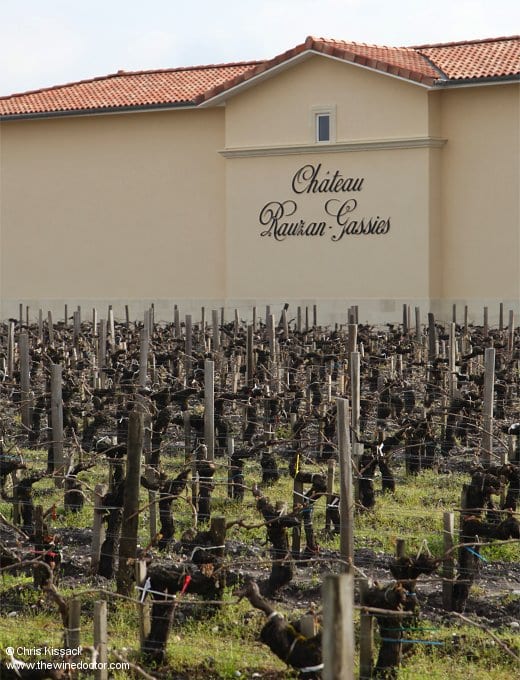Château Rauzan-Gassies: The Rauzan Dowries
Of the three brothers two had little interest in viticulture, and it was the youngest of the trio who took on his late father’s title together with the responsibility for the vineyards. Thus the domaine was reunited as one by 1730, and from this reunified domaine a number of other modern-day estates began to emerge. The first was created when 14 hectares of vines went as a dowry to Jean-Baptiste Desmirail on the occasion of his wedding to a Rauzan daughter, Marguerite Rauzan du Ribail, and this – as you might have already guessed – was the beginning of Château Desmirail. Then in 1762 another Rauzan family member, Elisabeth Ledoulx d’Emplet, a niece to Jean Baptiste des Mesures de Rauzan, married François de Peguilhan de Larboust, Marquis de Terme. There are no prizes for guessing that the 30 hectares given as a dowry was the beginnings of the modern-day Château Marquis de Terme.
Shortly afterwards, in 1763, the estate was divided between Jean-Baptiste de Rauzan (1693 – 1780) and a nephew, Jean de Roulier, Sieur de Gassies. He was a descendant of Laurent de Gassies, famed for his capture of a Spanish galleon as he returned from the Americas in 1523, and who has been immortalised in bronze, a statue of him on horseback gracing the courtyard at Château Rauzan-Gassies. Even though the two halves had distinct proprietors, the Rauzan estate continued to function as one for a few more years. It was only with the marriage of the next generation Catherine Jacquette Clémentine de Rauzan (1762 – 1828) to Baron Pierre Louis de Ségla (died 1789) in 1775 that the severance was made complete. This latter portion was of course the origin of the modern-day Château Rauzan-Ségla, while the part that had fallen to Jean de Roulier was the beginning of Château Rauzan-Gassies.

Please log in to continue reading:
